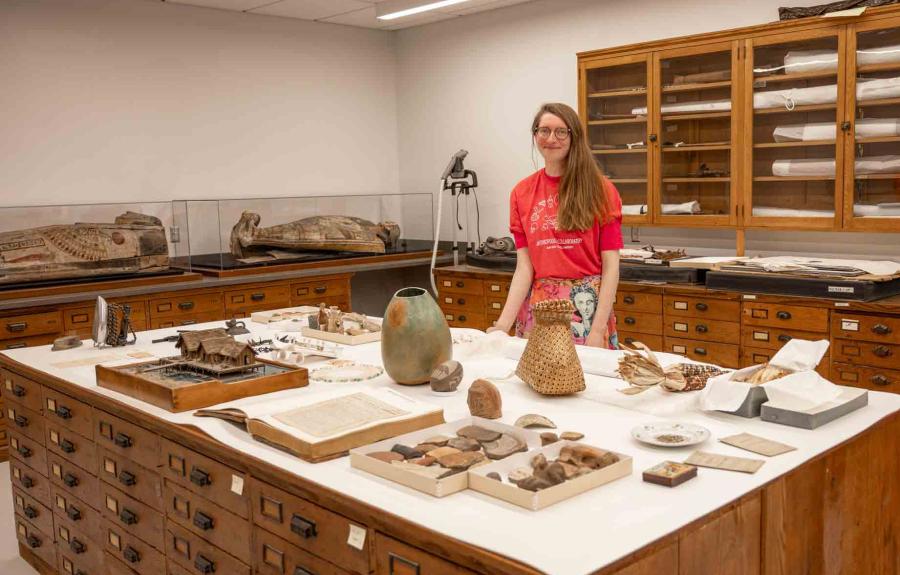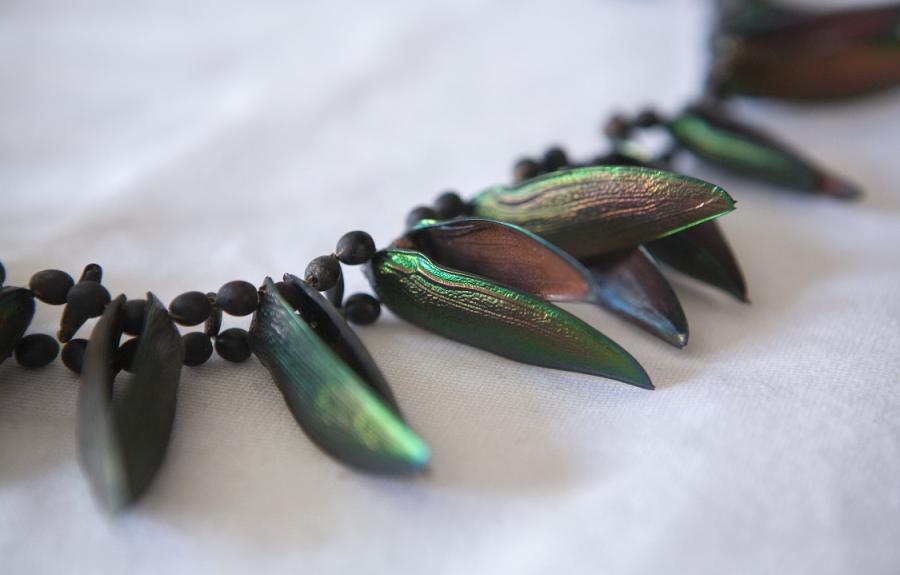Access
Located in the basement of Olin Library (161 Ho Plaza), the Collections are open for visitors during the term on Mondays from 1-4 PM and by appointment on a first-come, first-served basis to classes and members of the public, including school groups. Contact curator Alison Rittershaus at akr73@cornell.edu in order to set up a visit that connects the collections with your group’s interests and learning goals. Rotating exhibit cases that showcase student research and Collections highlights are located outside of the Collaboratory and available to visit during Olin Library opening hours.
History
As early as 1867-8 A. D. White and Ezra Cornell were planning a University Museum, which was seen as an integral part of Cornell's vision of "an institution where any person could find instruction in any study." McGraw Hall was constructed to house the Museum; when the cornerstone was laid in 1869 the ritual was presided by the Superintendent of Public Instruction, with a Masonic Ceremonial by the Grand Lodge of Free and Accepted Masons of the State of New York with the Knights Templars as escort. The building was completed in 1872.
In the original University Museum, the North Wing was devoted to the Department of Zoology, and the South Wing housed the Departments of Geology and Geography. Geology Prof. C. Fred Hartt and Zoology Prof. Burt G. Wilder were among the most active early faculty members in the Museum.
White and Cornell arranged for the donation or purchase of significant collections from around the world. Over the years, especially after Wilder's retirement in 1911, different parts of the University Museum collections were moved to new facilities, generally in associated departments and research laboratories.
The first major anthropological collections added to the Museum were archaeological materials collected in the Amazon region by geologist Hartt in 1870-71. A.D. White then purchased collections of Mississippian pottery and Old World stone tools, among others. Hartt supervised the anthropological materials until his departure for Brazil in 1874; historian Moses Coit Tyler was charged with curating this portion of the Museum in the late 1870s, but after the 1880s there was little curatorial interest in such things until Lauriston Sharp arrived as the first permanent anthropology faculty in 1937.
Over the years faculty, alumni and others have occasionally donated single items or collections to the Anthropology Collections, adding to the range of cultures and times represented. For decades the Anthropology Collections were the only part of McGraw Hall that retained something of the original University Museum; now located in Olin Library, cabinetry relocated from McGraw maintains that connection.
Selected Highlights
Materials in the Anthropology Collections range from stone tools of the Lower Paleolithic (the earliest tools produced by hominids) to the late 20th century, and come from many parts of the world. Each visitor will find different items that interest them. Here we feature just a few highlights; others can be seen on the accompanying pages of focused exhibits.
Victor and Edith Turner donated during their time here in the 1960s a collection of masks and full costumes from the Mukanda ritual of the Ndembu, which both have written about (e.g., The Forest of Symbols and The Ritual Process, both also published by Cornell University Press).
In 1870-71 Cornell geologist C. Fred Hartt accompanied the Morgan Expedition to Brazil, taking 11 Cornell students along. Hartt apparently found the Indians of the Amazon Basin to be as interesting as the geology, and he spent time both talking with them and excavating archaeological sites in the area. The Anthropology Collections include over 200 pieces collected by Hartt on that trip, most from Marajó Island.
Late Cornell Professor Lauriston Sharp donated two distinct collections, several dozen pieces from the Yir Yorront, the Australian aboriginal group he studied and famously wrote about in "Steel Axes for Stone-age Australians", and Hmong and Akka clothing from Thailand.
The Pacific Islands are represented in the Anthropology Collections by (among others) a range of items from the Philippines, most collected in the late 19th and early 20th centuries, and a pair of Hawaiian chiefly necklaces, a lei niho palaoa with its walrus ivory pendant (obtained by trade with sailors, and craved to represent a tongue) suspended from over 300 strands of braided human hair and a snail-shell lei.
The mummy of Penpi, a scribe of Thebes in the Third Intermediate Period (c.828-625 B.C.E.), was donated in 1884 by the American Consul in Cairo. The body of Penpi is maintained in secure storage to rest undisturbed, but his sarcophagus is on display. We also have small collections of other Egyptian, Greek and Roman artifacts.
Many pieces of Precolumbian Andean pottery and textiles are available for study, from several donors. Fakes of these have been made for over a century, and some are assuredly included here. These include examples from several regional traditions including Nazca, Moche, Chancay, Chimu and Inca.



